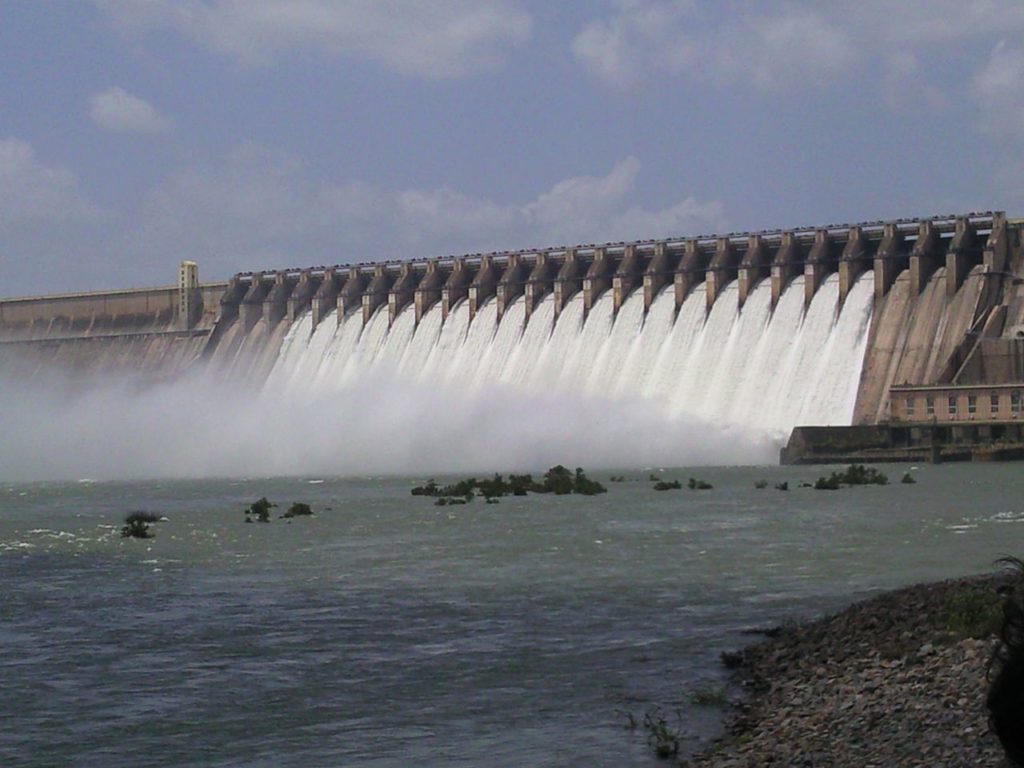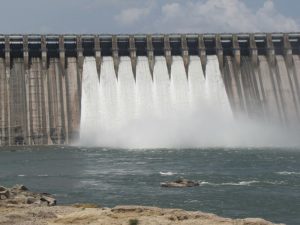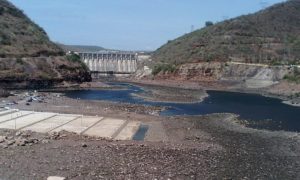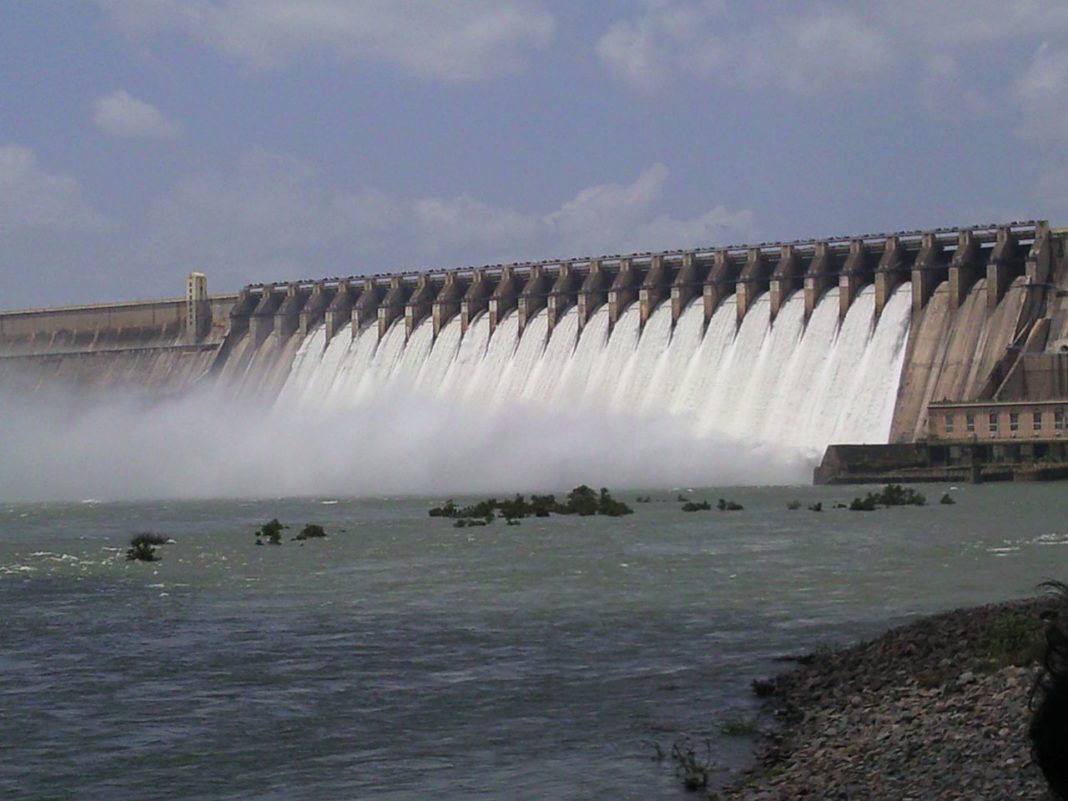Nagarjuna Sagar Dam is a masonry dam across the Krishna River at Nagarjuna Sagar which straddles the border between Nalgonda district in Telangana and Palnadu district in Andhra Pradesh. The dam provides irrigation water to the Nalgonda, Suryapet, Krishna, Khammam, West Godavari, Guntur, and Prakasam districts along with electricity generation.

Constructed between 1955 and 1967, the dam created a water reservoir with a gross storage capacity of 11.472 billion cubic meters. The dam is 150 m tall from its deepest foundation and 1.6 km long with 26 flood gates which are 13 m wide and 14 m tall. It is jointly operated by Andhra Pradesh and Telangana.

Nagarjuna Sagar Dam was the earliest in a series of large infrastructure projects termed “modern temples” initiated for achieving the Green Revolution in India. It is also one of the earliest multi-purpose irrigation and hydroelectric projects in India.

The hydroelectric plant has a power generation capacity of 815.6 MW with 8 units. First unit was commissioned on 7 March 1978 and the 8th unit on 24 December 1985.
Nagarjunasagar Dam is one of the popular weekend getaways from Hyderabad. Thousands of tourists visit Nagarjunasagar when the dam gates are open in the monsoon season (around September / October).
According to wikipedia















